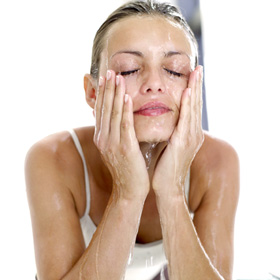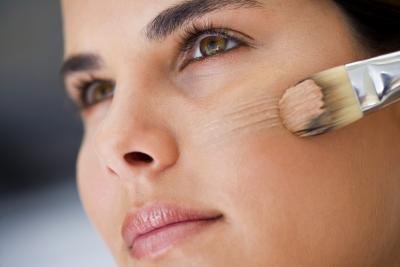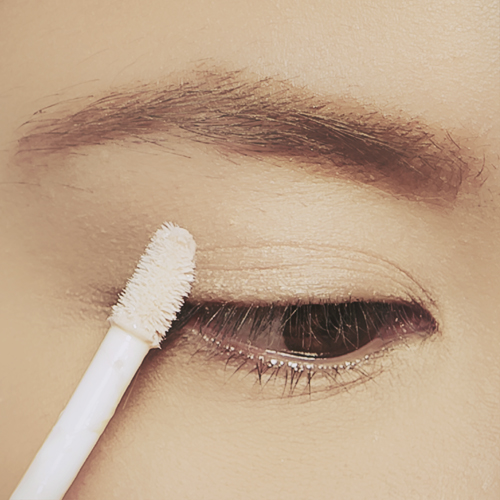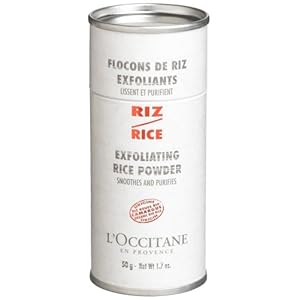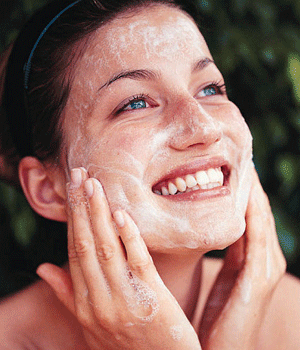Even if you cleanse, tone, apply a sunscreen in the morning and a moisturizer at night, there's still one thing missing that could make all the difference in the world to get you the skin you want: an exfoliant!
Facial Scrubs and specially formulated exfoliants are essential for skin care routine.
Without question, a well formulated AHA (alpha hydroxy acid such as glycolic and lactic acids) or BHA (beta hydroxy acid, also known as salicylic acid) product is much more benefial than a regular scrub.
 |
| A Regular Scrub |
 |
| Chemical Exfoliants |
Regular exfoliation can help remove dead skin cells, help keep pores clean and improve blood circulation, which will give your skin a healthy, more youthful glow. Exfoliation also helps your moisturizer and skin care treatments penetrate better.
When it comes to exfoliation, you have several choices:
1) You can make an appointment at a dermatology clinic or a trendy spa for a pricey skin-shedding regimen, or
2) You can buy top-shelf designer skin treatments that retail for more than $100 per tiny tube, or
3) You can spare your pocketbook by giving yourself an exfoliating treatment at home, using natural ingredients that you can find at your local supermarket, health-food store or even online. Some of these ingredients, in fact, are the same ones used in pricy, brand-name exfoliants. (Honey, lemon juice,yogurt, baking soda, ground fruits seeds and nuts, sugar, oatmeal, papaya, ground coffee, sea salt)

How Exfoliation Works
After an exfoliation treatment, new skin develops. Your new skin absorbs moisture more easily. Maintaining moisture helps slow the wrinkle process and produces a more glowing appearance.
When you gently get rid of built-up skin cells you can undo clogged pores, stop breakouts, smooth out wrinkles, even make dry skin become a thing of the past!
Exfoliation Scrubs
Granules found in exfoliant scrubs vary in size. Scrubs containing larger granules may be appropriate for less sensitive skin, while smaller granules are more appropriate for sensitive skin. Equally important, people with skin disorders, including those with acne or blemishes, have to be extremely cautious when selecting an exfoliation scrub. Dry skin can also be irritated by exfoliation scrubs.
From natural substances such as botanical extracts and almond shells, to alpha hydroxyl acids, every ingredient works differently. Use caution when applying a particular exfoliation scrub for the first time. Some ingredients, though natural, may be too harsh for your particular skin type. You'll have to experiment and make adjustments until you find the right products for your skin.
AHA and BHA Exfoliants
There are two primary topical ways to exfoliate skin, either with alpha hydroxy acids (AHAs), or with beta hydroxy acid (BHA). There is only one BHA (beta hydroxy acid) and that is salicylic acid, but there are five major types of AHAs that show up in skin-care products which are glycolic, lactic, malic, citric, and tartaric acids. Of these, the most commonly used and most effective AHAs are glycolic and lactic acids. Both of these have the ability to penetrate the skin, plus they have the most accumulated research on their functionality and benefit for skin.
What glycolic, lactic, and salicylic acids both do is "unglue" the outer layer of dead skin cells, allowing healthier cells to come to the surface. Removing this dead layer can improve skin texture and color, unclog pores, and allow moisturizers to be better absorbed by the skin. Both AHAs and BHA affect the top layers of skin, and they help to improve the appearance of sun-damaged, dry, and/or thickened skin.
Great question! When properly formulated, both AHAs and BHA are brilliant options for exfoliating the surface of skin, but each has its special qualities you'll want to consider when deciding which one to use:
- AHAs are preferred for sun-damaged and dry skin because they exfoliate on the surface of skin and have the added benefit of also improving moisture content. (8% AHA Gel)
- BHA is preferred for oily, acne-prone skin and for treating blackheads and white bumps because BHA can get through the oil that's clogging your pores, normalizing the lining of the misshapen pore that contributes to acne. The BHA products are designed specifically for oily/combination skin, blackhead-prone skin, and for those with acne.
If your skin is sun-damaged and you're also struggling with acne or clogged pores, add a BHA product to your routine. If you'd like to use an AHA and BHA at the same time, that is an option, though not really necessary. Some people find they work well when they're applied at the same time, but if you want to give this a try it is best to apply them separately, one during the day and one in the evening.
- You can apply an AHA or BHA product once or twice a day.
- You can also apply either of these around the eye area but not on the eyelid or directly under the eye.
- Apply the AHA or BHA product after your face is cleansed and after your toner has dried.
- Once the AHA or BHA has been absorbed, you can apply any other product in your routine, such as moisturizer, serum, eye cream, sunscreen, and/or foundation.
- If you're using a topical prescription product (retinoids), or any of the topical prescription products for rosacea apply the BHA or AHA first.
Scrubs are certainly an option for exfoliating your skin, but they have limitations you don't have to worry about with an AHA or BHA exfoliant. Scrubs only deal with the very top, superficial layer of skin while most of the unhealthy, built-up skin cells are beyond the reach of a scrub. What is most problematic is that many scrubs have a rough, coarse, uneven texture that can cause skin damage by tearing into the skin as it abrades away the surface, causing tiny tears that damage the skin's barrier. Scrubs often cause more problems than they could possibly solve.
If you do want to use a manual scrub, you can simply use a gentle washcloth with your daily cleanser, which works just as well to exfoliate the surface of skin as any cosmetic scrub you can buy. As a bonus, washcloths are softer (thus gentler) and of course they don't contain pore-clogging ingredients that oily, acne-prone skin doesn't need.
Exfoliating your skin is great, but how often to use one that works best for your skin type takes experimenting. It is possible to overdo it, and your skin will tell you if you've gone too far. For some people once a day works best, for others every other day, or once a week. However, exfoliating does not negatively affect how healthy skin cells are generated in the lower layers of skin. If anything, exfoliating unhealthy dead skin cells on the surface of skin can improve collagen production, increase skin's ability to hold moisture, and allow pores to function normally!




+copy.jpg)
+copy.jpg)
















